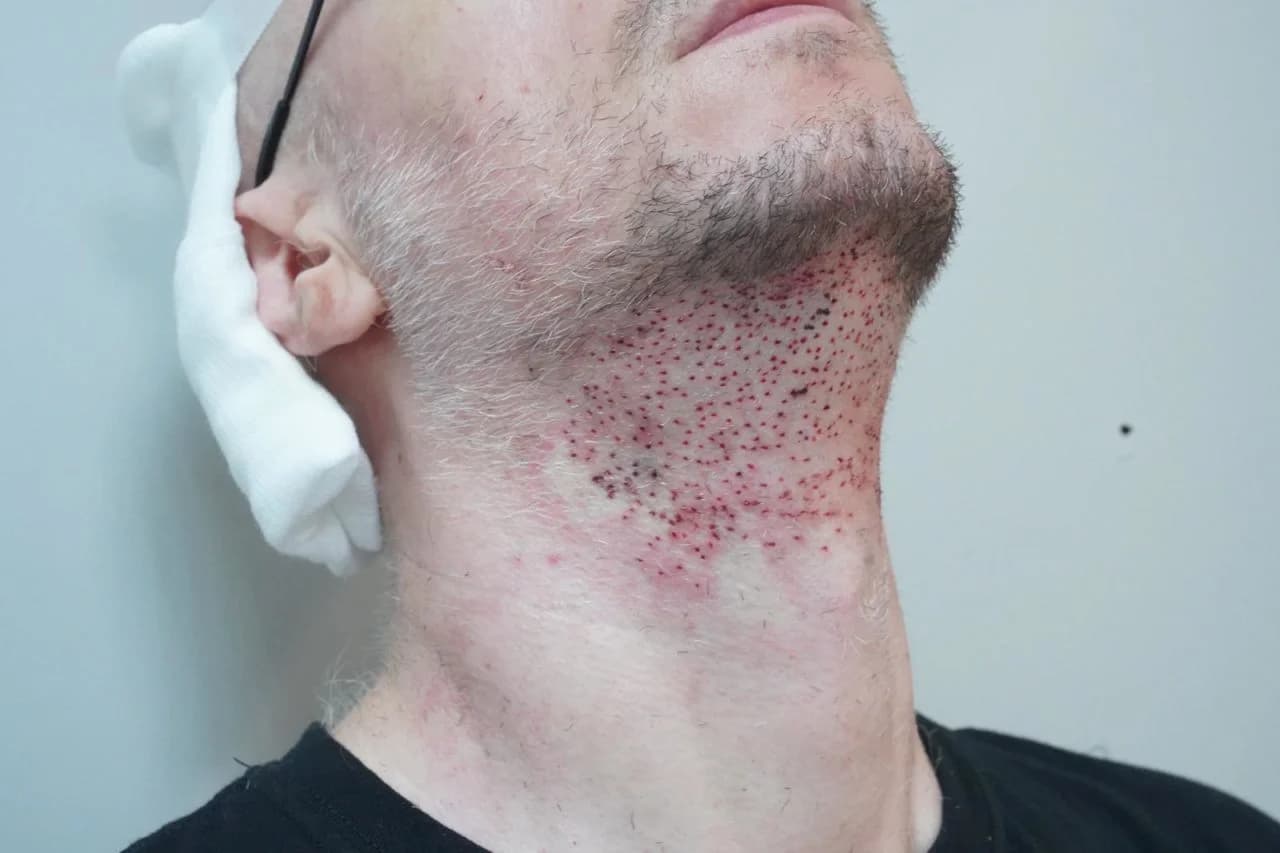Many men struggle with growing a full-looking beard even if they avoid shaving. Stubble doesn’t always grow uniformly on the face, resulting in patchy facial hair instead of a stylish beard. In some cases, their genetics make any type of beard growth practically impossible. But just as you can transplant your hair to the top of your head to tackle a receding hairline, you can also try a beard implant if your facial hair follicles aren’t cooperating.
What is a beard implant?
A beard transplant is a surgery that takes hair from your head (back of the scalp), and transplants it to the beard area. This is suitable for those who lack facial hair growth caused by genetics or scarring. There are two main approaches a surgeon can take:
Follicular unit extraction (FUE): This approach is done by harvesting complete follicular units one at a time from the donor area. FUE is less painful, which may explain why it’s the more commonly performed procedure
Follicular unit transplantation (FUT): For this approach, a surgeon cuts a small strip of tissue from the back of the head and removes the hair follicles from that tissue.

Beard transplant steps
Harvesting
Whether your chosen method is FUE or FUT, the first step involves shaving the area on your head that’s being harvested. Before the harvesting begins, you’ll be given a local anesthetic, so you won’t feel the harvesting or the implantation.
Implantation
Once the follicles have been harvested from your head, anesthesia will be injected into the area where the implants will be placed. Afterward, each follicle will be individually implanted into the facial skin, shaping a new beard.
Recovery
You need 7 to 14 days to recover from the beard transplant procedure. After 14 days, you can resume your normal activities. During this time tiny crusts may form around each newly implanted hair follicle, but these should flake off within a few days. After 3 weeks, you can start to shave or trim your new beard. Hair shedding after a transplant is an entirely normal part of the process; making way for new hair to grow in its place. Some aftercare measures your surgeon may advise you to do include:
Avoid touching your beard at all during the first 5 days after the treatment
You can wash your face but not the transplanted beard area after the first day, but don’t rub yourself dry – gently pat, instead
Avoid swimming in a pool for 4 weeks after the procedure
To avoid the increased risk of swelling, sleep flat on your back, with your head elevated for the first week
Who’s a good candidate for this procedure?
Since hair follicles will be harvested from the back of your head, it’s important to have healthy hair follicles if you are planning on having a beard transplant. But no worries, since even those experiencing hair loss on top of their head may have healthy hair on the back of their head. Your transplant surgeon will examine your scalp and determine if there are enough follicular units to transplant. If there doesn’t appear to be enough hair follicles to harvest, your doctor may recommend alternative treatments.

Beard transplant side effects
While side effects of a beard transplant are uncommon, it’s important to remember that this procedure is still a surgery and involves a local anesthetic, so it’s important to watch out for and manage any potential side effects. Among the side effects, you may experience are:
Mild swelling and bruising
Redness of the skin
Sensitivity at the donor or recipient beard area
When to start shaving again following a beard transplant?
You should have approximately two weeks following surgery before shaving or trimming your beard. It’s important to allow sufficient time for the follicles to become set in the new location. Don’t be alarmed if the transplanted hair follicles start to shed, since they’re giving way to new hair growth. After that two-week window has passed, you can shave and style your beard.
Conclusion
A beard transplant is a cosmetic surgical procedure designed to enhance facial hair density and fullness, particularly in the beard area. It's an ideal solution for men who struggle with sparse or patchy beards, scars that inhibit hair growth, or those who simply desire a fuller, more defined beard. A beard transplant is a transformative procedure that can provide a lasting solution to various facial hair concerns.
Read more: